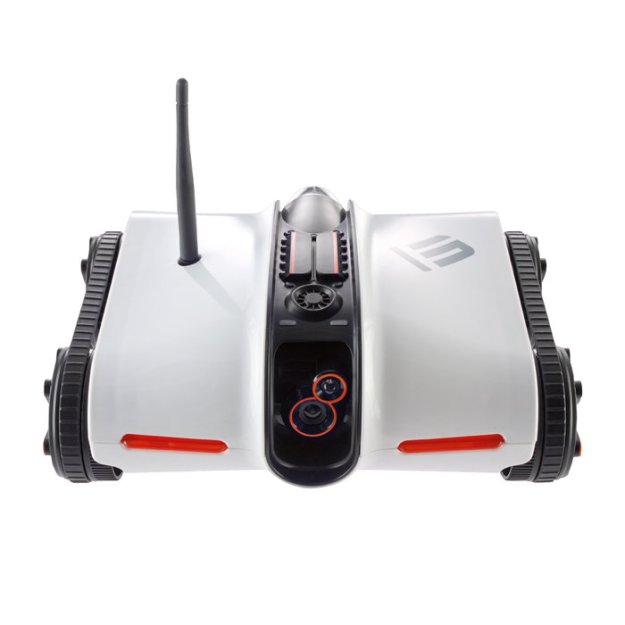
As any dog owner knows, a pooch can either be your best friend or your biggest nightmare. And some of the worst behavior can happen when you’re not around to correct it. That’s where the Rover spy tank comes in.
Armed with camera and microphone, the Rover can stream video, still images and audio feeds directly to your iPad, iPhone or iPod touch (2nd generation or newer) through a free app that’s available for download through the iTunes App Store. The iOS app also allows users to control the stylish mini tank up to 200 feet away, with an unobstructed path, or up to 100 feet away when there’s walls and doors between user and Rover. That way, when Fido starts to tear into the garbage bag, you can jump out and reprimand him just at the right time.
Produced by Brookstone, the Rover is powered by 6 AA batters (included), is recommended for ages 14 and up, and costs $149.99.
In reality, the Rover spy tank probably likely isn’t that good for actually spying – especially not on a dog, who would immediately begin chasing it the moment it moved, the probably bite it, rip off one of the treads and start running around the couch while you try to catch him.
It’s possible that you could use the Rover for some covert data-gathering, as long as you don’t drive it around. Seeing as the thing is bright white, it’s hard to imagine this thing rolling by unnoticed, my human or canine alike.
Practical applications of spy tanking aside, the Rover does look awesome. And we could see anyone, from toddlers to geriatrics getting a kick out of this. Ordinarily, we might be a bit concerned about the privacy implications of such a gizmo – of course, a few still exist, since it is a device made explicitly for spying – but it’s obviously built more for light-hearted shenanigans than anything particularly devious. Though we have a feeling more than a few 14-year-old boys will find a way to get themselves into trouble with it.


